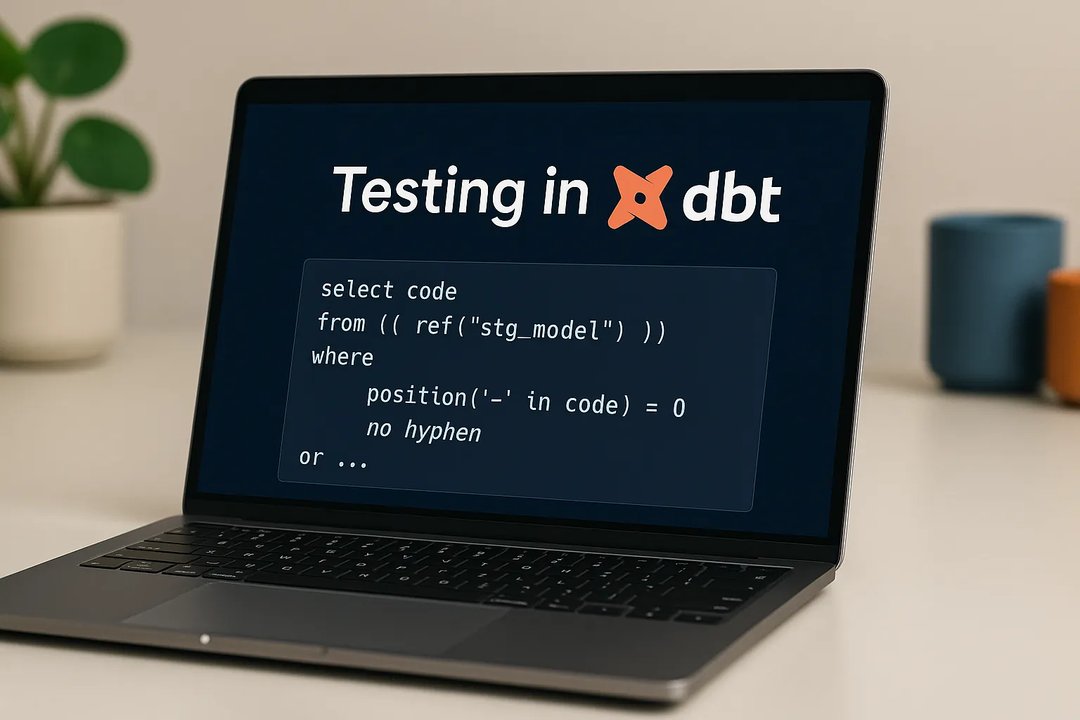
Dominik Kozaczko
19 October 2023, 10 min read

What's inside
- What is an NLP library?
- Why Use Python for Natural Language Processing (NLP)?
- How to Leverage Python's Power for NLP?
- List of NLP Tools and Libraries
- Take Advantage of Python for NLP
- Unleash the Power of Expertise with Sunscrapers!
Natural language processing (NLP) is a field located at the intersection of data science and Artificial Intelligence (AI) that – when boiled down to the basics – is all about teaching machines how to understand human languages and extract meaning from text. This is also why machine learning is often part of NLP projects.
But why are so many organizations interested in NLP these days? Primarily, these technologies can provide them with a broad range of valuable insights and solutions that address language-related problems consumers might experience when interacting with a product.
There’s a reason why tech giants like Google, Amazon, or Facebook are pouring millions of dollars into this line of research to power their chatbots, virtual assistants, recommendation engines, and other solutions powered by machine learning.
Since NLP relies on advanced computational skills, developers need the best available tools that help to make the most of NLP approaches and algorithms for creating services that can handle natural languages.
What is an NLP library?
In the past, only experts could be part of natural language processing projects that required superior mathematics, machine learning, and linguistics knowledge. Today, the scenario has changed. Developers can access ready-made tools that simplify text preprocessing, allowing them to focus more on building robust machine-learning models.
These tools and libraries are created to address and solve various NLP problems. Over the years, many such libraries have come to the forefront, especially in the Python ecosystem, assisting developers in delivering quality projects efficiently.
Why Use Python for Natural Language Processing (NLP)?
Many things about Python make it a perfect programming language choice for an NLP project. For example, it has a simple syntax and clear semantics.
Moreover, developers can enjoy great support for integrating other languages and tools that come in handy for techniques like machine learning.
But something else about this versatile language makes it an ideal technology for helping machines process natural languages. It provides developers with an extensive collection of NLP tools and libraries that enable them to handle many NLP-related tasks, such as document classification, topic modeling, part-of-speech (POS) tagging, word vectors, and sentiment analysis.
How to Leverage Python's Power for NLP?
To truly harness the capabilities of Python for NLP, it's crucial to delve into the vast array of libraries it offers.
Python boasts a rich assortment of NLP libraries, from NLTK and spaCy to TextBlob. Familiarizing yourself with these resources and selecting one that aligns seamlessly with your project's objectives is paramount. Furthermore, becoming an active member of Python-NLP communities can be invaluable. Engaging in regular discussions, attending workshops, and participating in webinars can help you stay abreast of the latest developments and serve as a platform to address any queries. But the journey doesn't stop at knowing the tools; it’s about mastering them.
List of NLP Tools and Libraries
Natural Language Toolkit
NLTK is an essential library that supports tasks such as classification, stemming, tagging, parsing, semantic reasoning, and tokenization in Python. It's your primary tool for natural language processing and machine learning. Today it serves as an educational foundation for Python developers who are dipping their toes in this field (and machine learning).
The library was developed by Steven Bird and Edward Loper at the University of Pennsylvania and played a crucial role in breakthrough NLP research. Many universities around the globe now use NLTK, Python libraries, and other tools in their courses.
This library is pretty versatile, but I must admit that it’s also quite challenging to use for Natural Language Processing with Python. NLTK can be relatively slow and doesn’t match the demands of quick-paced production usage. The learning curve is steep, but developers can take advantage of resources like this helpful NLTK book to learn more about the concepts behind the language processing tasks this toolkit supports.
Use-case: Tokenization of text.
import nltk
from nltk.tokenize import word_tokenize
nltk.download('punkt')
text = "Hello, how are you doing?"
tokens = word_tokenize(text)
print(tokens)
TextBlob
TextBlob is a must for developers who are starting their journey with NLP in Python and want to make the most of their first encounter with NLTK. It provides beginners with an easy interface to help them learn the most basic NLP tasks like sentiment analysis, pos-tagging, or noun phrase extraction.
While it streamlines many of NLTK's complexities, it does inherit its slower processing speed. But TextBlob doesn't rest on NLTK's laurels. Features like spelling correction and translation allow developers to perform NLP tasks without wading deep into intricate processes.
Use-case: Sentiment analysis of a sentence.
from textblob import TextBlob
text = "I love using this product. It's fantastic!"
blob = TextBlob(text)
sentiment = blob.sentiment.polarity
print(sentiment)
CoreNLP
This library was developed at Stanford University and written in Java. It has been pivotal in academic and research settings due to its accurate natural language parsing and rich linguistic annotations.
What is the most significant advantage of CoreNLP? The library is high-speed and works well in product development environments. It's renowned for its robustness and supports various tasks, including named entity recognition and coreference resolution.
Moreover, some CoreNLP components can be integrated with NLTK, which is bound to boost the latter's efficiency.
Use-case: Named Entity Recognition (NER).
# Note: This requires running the CoreNLP server and its Python wrapper.
from pycorenlp import StanfordCoreNLP
nlp = StanfordCoreNLP('http://localhost:9000')
text = "Barack Obama was the president of the United States."
result = nlp.annotate(text, properties={'annotators': 'ner', 'outputFormat': 'json'})
print(result['sentences'][0]['entitymentions'])
Gensim
Gensim is a Python library that identifies semantic similarity between two documents through vector space modeling and topic modeling toolkits. It can handle large text corpora with the help of efficient data streaming and incremental algorithms, which is more than can be said about other packages that only target batch and in-memory processing.
What I love about it are its small memory footprint, usage optimization, and processing speed. These were achieved with the help of another Python library, NumPy. The tool's vector space modeling capabilities are also top-notch.
Use-case: Topic modeling with LDA (Latent Dirichlet Allocation).
import gensim
from gensim import corpora
documents = ["Human machine interface for lab abc computer applications",
"A survey of user opinion of computer system response time",
...]
texts = [doc.split() for doc in documents]
dictionary = corpora.Dictionary(texts)
corpus = [dictionary.doc2bow(text) for text in texts]
lda = gensim.models.ldamodel.LdaModel(corpus, num_topics=3, id2word=dictionary, passes=15)
print(lda.print_topics(num_topics=3, num_words=3))
spaCy
spaCy is a relatively young library designed for production usage. That’s why it’s much more accessible than other Python NLP libraries like NLTK. spaCy offers the fastest syntactic parser available on the market today.
Moreover, since the toolkit is written in Cython, it’s also really speedy and efficient.
However, no tool is perfect. Compared to the libraries we have covered so far, spaCy supports the smallest number of languages (seven). However, the growing popularity of machine learning, NLP, and spaCy, as key libraries, means that the tool might start supporting more programming languages soon.
Use-case: Dependency parsing of a sentence.
import spacy
nlp = spacy.load("en_core_web_sm")
sentence = "The cat chased the mouse"
doc = nlp(sentence)
for token in doc:
print(token.text, "-->", token.dep_)
polyglot
This slightly lesser-known library is one of my favorites because it offers a broad range of analysis and impressive language coverage. Thanks to NumPy, it also works fast.
Polyglot is similar to spaCy – it’s very efficient, straightforward, and an excellent choice for projects involving a language spaCy doesn’t support. The library also stands out from the crowd because it requests a dedicated command in the command line through the pipeline mechanisms—worth a try.
Polyglot is more than just an efficient library; it's a multilingual NLP library. It offers word embeddings for over 130 languages and supports tasks like named entity recognition and morphological analysis in multiple languages, making it a versatile choice for multilingual projects.
Use-case: Language detection.
from polyglot.detect import Detector
text = "Bonjour le monde!"
detector = Detector(text)
language = detector.language.code
print(language)
scikit-learn
This handy NLP library provides developers with a wide range of algorithms for building machine-learning models. It offers many functions for the bag-of-words method of creating features to tackle text classification problems. The strength of this library is the intuitive class methods.
However, the library doesn't use neural networks for text preprocessing. So if you'd like to carry out more complex preprocessing tasks like POS tagging for your text corpora, it's better to use other NLP libraries and then return to scikit-learn for building your models.
With strong community backing and extensive documentation, it remains a favorite among many developers.
Use-case: Text classification using TF-IDF and Support Vector Machine.
from sklearn.feature_extraction.text import TfidfVectorizer
from sklearn.svm import SVC
from sklearn.pipeline import make_pipeline
X_train = ["This is a positive sentence.", "This is a negative statement.", ...]
y_train = ["positive", "negative", ...]
model = make_pipeline(TfidfVectorizer(), SVC())
model.fit(X_train, y_train)
Pattern
Another gem in the NLP libraries Python developers use to handle natural languages. The Pattern allows part-of-speech tagging, sentiment analysis, vector space modeling, SVM, clustering, n-gram search, and WordNet. You can use a DOM parser, a web crawler, and helpful APIs like Twitter or Facebook. Still, the tool is a web miner and might not be enough to complete other natural language processing tasks.
Use-case: Part-of-speech tagging.
from pattern.en import parse
text = "The sun shines brightly."
tagged_text = parse(text, relations=True, lemmata=True)
print(tagged_text)
Hugging Face transformer
HuggingFace has been gaining prominence in Natural Language Processing (NLP) since transformers' inception. It is an AI community and Machine Learning platform created in 2016 by Julien Chaumond, Clément Delangue, and Thomas Wolf.
Its goal is to provide Data Scientists, AI practitioners, and Engineers with immediate access to over 20,000 pre-trained models based on the state-of-the-art pre-trained models available from the Hugging Face hub.
These models can be applied to:
- Text in over 100 languages for classification, information extraction, question answering, generation, generation, and translation.
- Speech, for tasks such as object audio classification and speech recognition.
- Vision for object detection, image classification, and segmentation.
- Tabular data for regression and classification problems.
- Reinforcement Learning transformers.
Hugging Face Transformers also provides almost 2000 data sets and layered APIs. Thanks to nearly 31 libraries, programmers can efficiently work with those models. Most are deep learning, such as PyTorch, TensorFlow, JAX, ONNX, Fastai, Stable-Baseline 3, etc.
Use-case: Using a pre-trained BERT model for sentence embedding.
from transformers import BertTokenizer, BertModel
import torch
tokenizer = BertTokenizer.from_pretrained('bert-base-uncased')
model = BertModel.from_pretrained("bert-base-uncased")
text = "Transformers are amazing!"
inputs = tokenizer(text, return_tensors="pt")
with torch.no_grad():
outputs = model(**inputs)
embeddings = outputs.last_hidden_state.mean(dim=1)
print(embeddings)
Note: Each of these code snippets is a simplification of real-world use cases. Before using them in actual projects, you may need to install the necessary libraries, handle edge cases, and adapt them to the specific requirements of your task.
Take Advantage of Python for NLP
In the universe of natural language processing (NLP), Python shines as a gleaming star. Imagine crafting intelligent software that gracefully dances with the complexities of human languages—it's no easy feat. Yet, Python rolls out a red carpet, armed with an arsenal of powerful NLP libraries, ensuring developers are well-equipped and inspired.
Dive into these nine remarkable libraries; you'll see why Python is the maestro orchestrating the symphony of machine understanding of human dialects. With its seamless versatility and the dynamism of these tools, Python beckons any NLP enthusiast to create, innovate, and mesmerize. Welcome to the enthralling world of Python-powered NLP.
Unleash the Power of Expertise with Sunscrapers!
At Sunscrapers, we aren't just developers; we're your dream team, a blend of unparalleled expertise and passion. Got an idea? Let's elevate it! With our adept hands-on Python, Django, and an array of technologies, your vision transforms into reality, not just any reality but one that stands out!
Ready to collaborate with the best? Dive into a conversation with us and discover how we can push boundaries and redefine excellence together.


